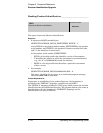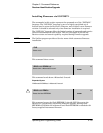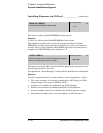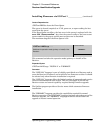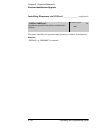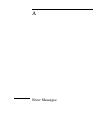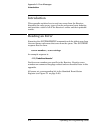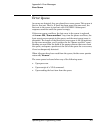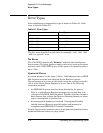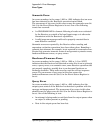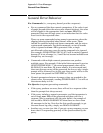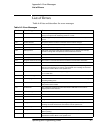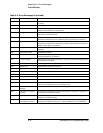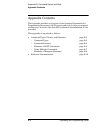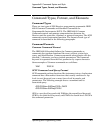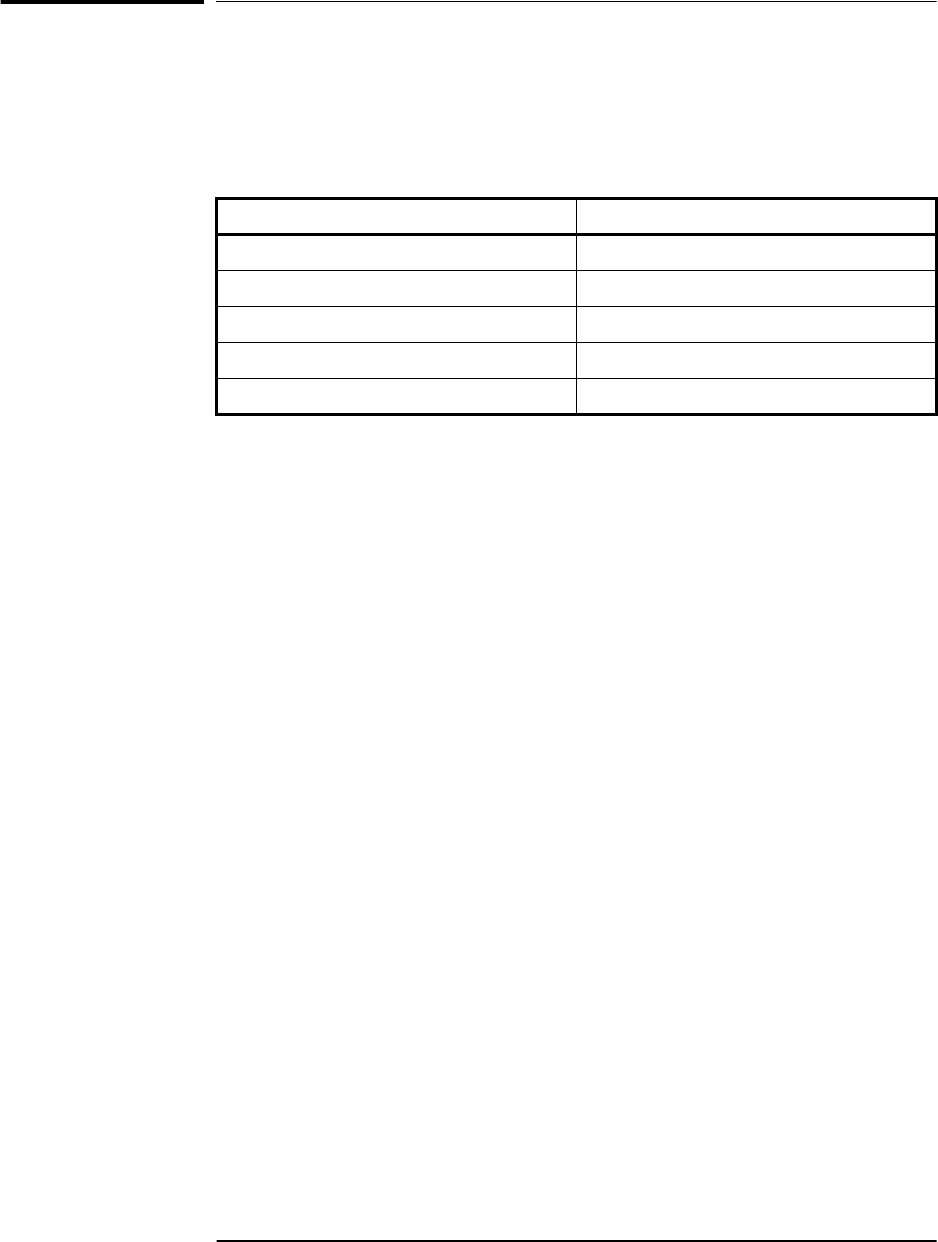
Appendix A Error Messages
Error Types
A-4 Operating and Programming Guide
Error Types
Error numbers are categorized by type as shown in Table A-1. Each
error is listed in Table A-2.
The first error described in each class (for example, −100, −200, −300,
−400) is a “generic” error.
No Error
The
:SYST:ERR?
response +0, "No error" indicates that the Receiver
has no errors. The error queue is empty when every error in the queue
has been read (:SYST:ERR? query) or the queue was cleared by power-
on or *CLS.
Syntactic Error
An <error number> in the range [
−
100 to
−
199] indicates that an IEEE
488.2 syntax error has been detected by the Receiver’s parser.
The occurrence of any error in this class causes the syntactic error bit
(bit 5) in the Event Status Register to be set. One of the following
events has occurred:
• An IEEE 488.2 syntax error has been detected by the parser.
That is, a controller-to-Receiver message was received that is in
violation of the IEEE 488.2 Standard. Possible violations include a
data element that violates the Receiver listening formats or whose
type is unacceptable to the Receiver.
• An unrecognized header was received. Unrecognized headers
include incorrect Receiver-specific headers and incorrect or
unimplemented IEEE 488.2 Common Commands.
Events that generate syntactic errors do not generate semantic errors,
hardware/firmware errors, or query errors.
Table A-1. Error Types
Error Number Error Type
+0 No Error
−100 to −199 Syntactic Errors
−200 to −299 Semantic Errors
−300 to −350 Hardware/Firmware Errors
−400 to −499 Query Errors



